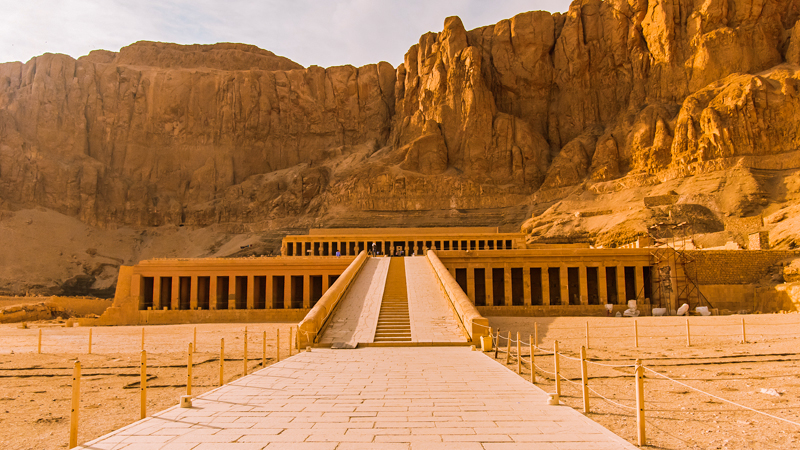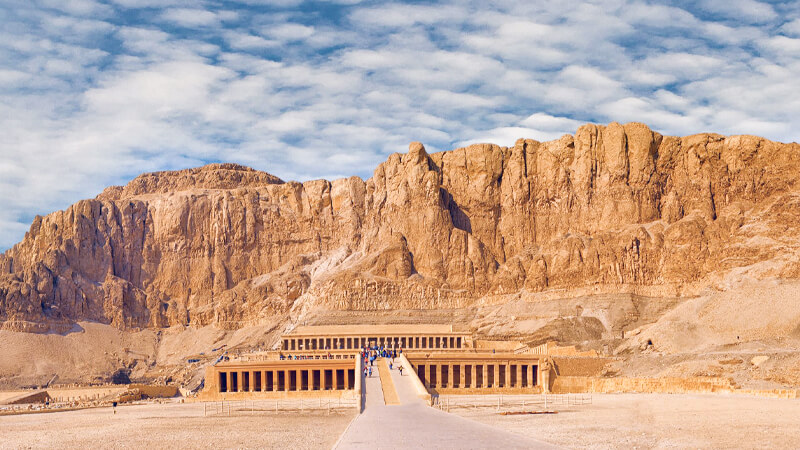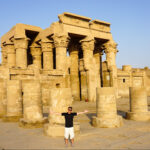Nestled within the rugged cliffs of Deir el-Bahari in Luxor, Egypt, Next to the Valley of the Kings, the enchanting Hatshepsut Temple stands as a testament to the architectural marvels of ancient Egypt. This awe-inspiring structure, dedicated to the legendary Queen Hatshepsut, offers a glimpse into a bygone era’s sophisticated building techniques and artistic finesse. In this detailed exploration, we will unravel the intriguing story and remarkable features of Hatshepsut Temple.
Hatshepsut Temple: A Glimpse into the Past
Unraveling the Enigma of Hatshepsut Temple
Hatshepsut Temple, often referred to as “Djeser-Djeseru” or “the Sublime of Sublimes,” is a monumental mortuary temple that commemorates the reign of Queen Hatshepsut, one of Egypt’s most influential and enigmatic rulers. This grand structure blends seamlessly into the natural landscape, reflecting the queen’s desire for harmony between architecture and nature.

The Legacy of Queen Hatshepsut
The Reign and Achievements of Queen Hatshepsut
Queen Hatshepsut, who ruled Egypt during the 18th dynasty, left an indelible mark on history. Defying societal norms, she ascended the throne as pharaoh, effectively becoming one of the first female rulers in recorded history. Monumental building projects, maritime expeditions, and economic prosperity marked her reign.
Architectural Ingenuity and Design
Hatshepsut Temple is a true masterpiece of ancient Egyptian architecture. The temple’s design incorporates a series of terraced colonnades, ramps, and courtyards, creating a visually striking and harmonious composition. The precision of the construction and the use of stone reflect the advanced engineering skills of the time.
Exploring the Marvels Within
The Splendor of the Terraced Architecture
As you ascend the terraced levels of Hatshepsut Temple, you are met with a breathtaking panorama of intricate columns, statues, and reliefs. The colonnaded terraces serve as architectural elements and a canvas for telling the stories of Queen Hatshepsut’s divine lineage and exploits.
The Birth Colonnade: A Celebration of Divine Origin
One of the most remarkable features of the temple is the Birth Colonnade, which narrates the story of Queen Hatshepsut’s divine birth. The intricately carved reliefs depict the holy conception and the god Amun’s prophetic announcement of her destined rule.

FAQs about Hatshepsut Temple
Who was Queen Hatshepsut?
Queen Hatshepsut was a powerful ancient Egyptian ruler who defied convention by ascending the throne as pharaoh.
How was Hatshepsut Temple constructed?
Hatshepsut Temple was meticulously constructed using a combination of terraced architecture and advanced stone-cutting techniques.
What is the significance of the Birth Colonnade?
The Birth Colonnade highlights Queen Hatshepsut’s divine lineage and legitimizes her rule by depicting her religious conception and destined reign.
Can visitors enter the interior of Hatshepsut Temple?
Yes, visitors can explore the interior chambers of Hatshepsut Temple, where they can witness the intricate reliefs and architectural details up close.
What happened to Hatshepsut’s legacy after her reign?
Following her death, many of Hatshepsut’s monuments and images were defaced or destroyed, possibly due to political reasons.
How have modern restoration efforts contributed to the preservation of Hatshepsut Temple?
Modern restoration efforts have focused on preserving and conserving the temple’s fragile architecture and artwork, ensuring that future generations can continue to marvel at its splendor.
Conclusion
The Hatshepsut Temple is a monument that will stand the test of time as a witness to ancient Egypt’s inventiveness, determination, and creative skill. Its terraced architecture, detailed reliefs, and historical relevance offer a glimpse into a society that revered its rulers and honored them via spectacular constructions. Through the window that its architectural terraces provide, this is visible. You can’t help but be transported back in time as you stand in front of the majesty of the Hatshepsut Temple. The legends carved into the stone, and the tenacious spirit of a magnificent queen will intrigue you.




